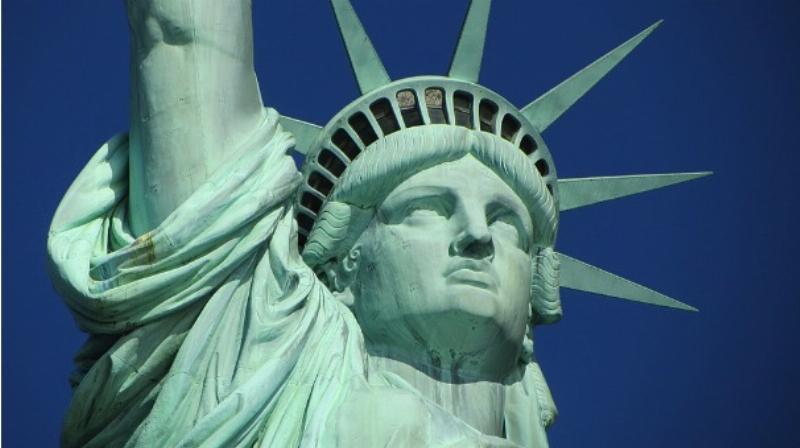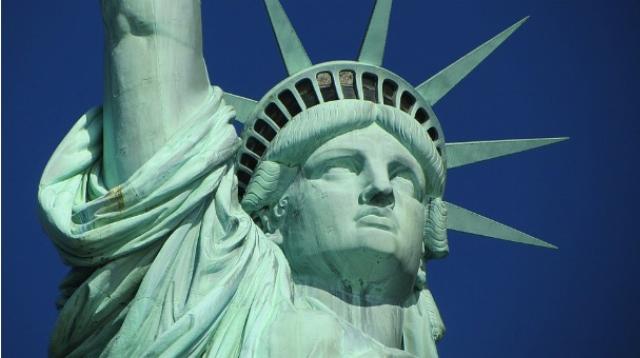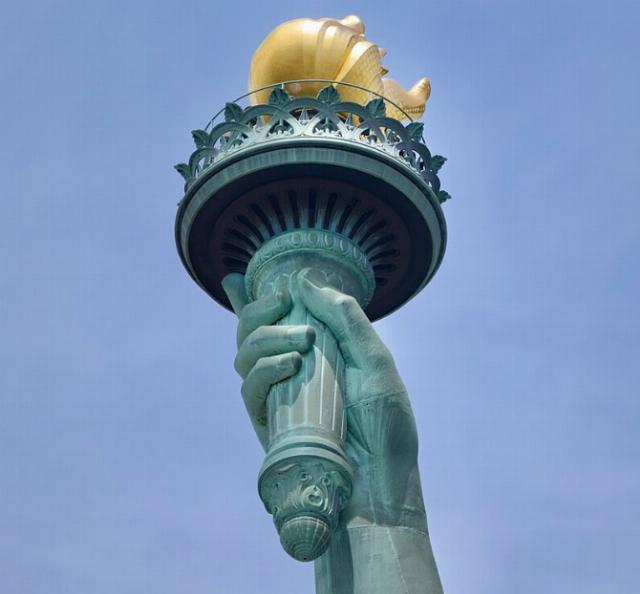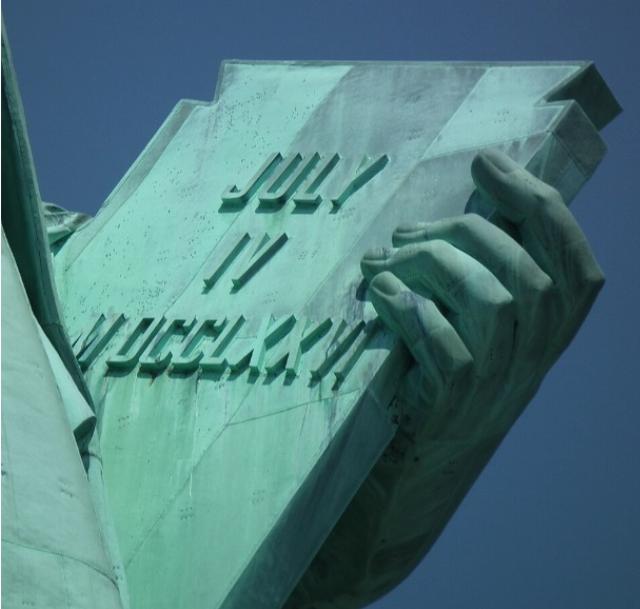


On this exact day, August 5th, in 1884, the cornerstone for the Statue of Liberty was laid. Encased in its core were copies of the three greatest documents of liberty in the world: The Bible, The Declaration of Independence, and the US Constitution.
In celebration of this day and as we count down to our nation’s 250th birthday, it is vital to understand the Statue of Liberty’s true meaning, and not the meaning that others want to impose on it.
Some people today believe that the Statue of Liberty is like a “Welcome Wagon” for a global homeless shelter called the United States of America. They take an Emma Lazarus poem that was placed on the statue 20 years after its dedication and make the case that anyone who wants to come to the United States should be able to do.
“Give me your tired, your poor,
Your huddled masses yearning to breathe free,
The wretched refuse of your teeming shore.
Send these, the homeless, tempest-tost to me,
I lift my lamp beside the golden door!”
The Marxist progressive left desires unlimited immigration, both legal and illegal. They use our compassion as Americans against us. After all, “we are a nation of immigrants,” they say.
The new reality they advocate for is Lady Liberty with her hand upraised, not with the torch of liberty, but with coupons for the free stuff the masses of humanity will receive if they just make it into the United States. In their eyes, the Statue of Liberty should just wave them in. “Come on in, get your freebies here. No commitment to American values. No need to learn our history or follow our laws. You deserve to be here, so get here any way you can.”
This is a progressive, globalist interpretation using a fragment of a poem to manipulate us.
The real history of this poem is that it was a part of the fundraising project for the pedestal on which the statue was to stand. Emma Lazarus was a famous poetess at the time, and she was asked to produce a poem that could be auctioned at a fundraiser. She agreed and titled her work, The New Colossus.
Her poem was never a part of the design concept or symbolism being built into the statue itself. In fact, the purchaser accidentally discarded the poem at some point after the auction, and it was lost for 20 years.
Then, remarkably, one of Lazarus’s friends stumbled upon it in a used bookstore two decades later. She brought it to some civic leaders and convinced them that this would be a good historical addition to the statue. So, a plaque of the entire poem was made and placed on an inside wall of the pedestal, making it a part of the project’s history, but by no means the main point.
Today, citizens have been misled to believe the poem was a part of Lady Liberty’s original concept of Lady Liberty and that its words supersede the Constitution and even establish immigration policy.
So then, what is the true symbolism of the Statue of Liberty?
The answer to this is not as easily found as one might think. You can go to the Statue of Liberty National Park website and, buried in the FAQs, you will see a tepid attempt that falls way short of anything meaningful or inspirational.
But if you dig into the writings, history, and design concepts of the project’s sculptor, Frederic-Auguste Bartholdi, and its promoter, Edouard de Laboulaye, you will find these amazingly important truths:
“LIBERTY ENLIGHTENING THE WORLD.” This is actually Lady Liberty’s real name. In her name alone, we can see her purpose. Enlightenment means to provide intellectual or spiritual insight. The idea here is that the American concepts of liberty are offered to the world, so that other nations might adopt them and experience the same benefits that the people living in the United States of America have enjoyed. They are not forced on the world, but offered freely so that all can flourish.
LIBERTY’S CROWN. The spikes represent sunbeams from heaven to the seven continents and the seven seas. Her crown reinforces the idea that liberty is to be proclaimed to the ends of the earth.

Public domain.
LIBERTY’S TORCH. In her right hand is a torch that is held high. This is not the torch of revolution that seeks to set fire and destroy. This is a flame that gives light and pushes back the darkness, showing the way forward.

Image by AskALotl (cropped). CC BY 4.0.
LIBERTY’S TABLET. In her left hand, held firmly and protected, is a tablet shaped like a keystone. Bartholdi chose a keystone because it is the central stone at the summit of an arch or structure that locks the whole thing together. It’s the central principle of a system in which all else depends.

Image by Erik Drost. CC BY 2.0.
Rising off the face of the keystone tablet is the date July 4, 1776, representing the Declaration of Independence. That document, in turn, puts the Creator at the center of America’s creation:
We hold these truths to be self-evident, that all men are created equal, that they are endowed by their Creator with certain unalienable Rights, that among these are Life, Liberty and the pursuit of Happiness.
Bartholdi’s symbolism is that the Declaration is central to everything, and central to the Declaration is the Creator from whom inalienable rights are born into mankind. They are a gift from God, not a gift from government or men.
LIBERTY’S FEET. Liberty is depicted as walking on the broken chains of tyranny, symbolizing that all nations and all people who embrace her ideals will break free from tyranny and live in liberty.

Here too is one of the most profound pieces to understanding the Statue of Liberty. Her right heel is raised, implying that Liberty is not standing still; she is moving forward, walking out into the world.
This reinforces that American concepts of liberty, unique in all the world, are offered to the world and to all who will freely embrace them. Picture in your mind, not Lady Liberty standing on an island in New York, but walking across the world spreading her ideals the world over.
From the cornerstone of Lady Liberty where the Bible, the Declaration, and the Constitution are buried, through the tablet she holds protected and firm, to the torch held high, Lady Liberty’s entire being is electrified with the fact that our rights are God given and these rights are for all people, at all times, everywhere.
I think it is also notable that Liberty is built on a retired fort. This should remind us that liberty must be fought for in every generation, or it will slip away without our notice.
Let me close out by returning to Emma Lazarus’s much-abused poem, for it does have a place in the statue’s history. As you embrace and teach the important truths originated by Bartholdi and Laboulaye above, let me draw your attention to a vital phrase in the poem itself that is often overlooked. It is the phrase “yearning to breathe free.”
Those coming to the United States as legal immigrates should only be those who yearn to understand the principles on which our country is founded, yearn to support the rule of law, yearn to embrace American history and culture, yearn to assimilate, and yearn to be a part of advancing the American Experiment in self-government, not tear it down.
On this important anniversary day, lock down these truths in your mind and share them with others. Be a flame of liberty and spiritual awakening.
And like the Statue of Liberty, get moving, and go out and spread liberty throughout the world.
(For more details and video training on these concepts, go to The Statue of Liberty Series.)
Craig Seibert is the director of www.DeclarationOfIndependence250.org, and www.ChristianCivicsTraining.org, where you will find an abundance of free resources, including a special, detailed teaching series on the Statue of Liberty. Craig is also a Coach Mentor for www.PatriotAcademy.com and www.ServeGodDefendLiberty.com. Learn more about brand new free courses on Rebuilding Liberty Here.
